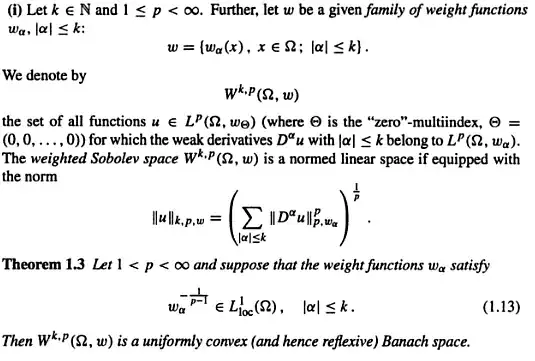From the book by Kufner:
How do I prove this theorem? I'd like to do it using the epsilon delta definition (see http://en.wikipedia.org/wiki/Uniformly_convex_space) if possible.
From the book by Kufner:
How do I prove this theorem? I'd like to do it using the epsilon delta definition (see http://en.wikipedia.org/wiki/Uniformly_convex_space) if possible.
To prove that $W^{k,p}(\Omega,w)$ is a Banach space when $(1.13)$ is satisfied, you can see here in this paper of Kufner. There, he also shows that the condition $(1.13)$ is necessary. The big motivation for such condition is the fact that if it is satisfied, then $L^p(\Omega, w_\alpha)$ is continuously embedded in $L^1(\Omega)$ (with the usual measure).
To prove the uniformly convexity of $W^{k,p}(\Omega,w)$, you can use this same proof, which works because $L^P(\Omega,w_\alpha)$ is uniformly convex (see Brezis page 95, Theorem 4.10 and Remarkk 3).
To give a proof by using delta and epsilon definition, you can take, for example, the proof given by Brezis and apply the isometry.